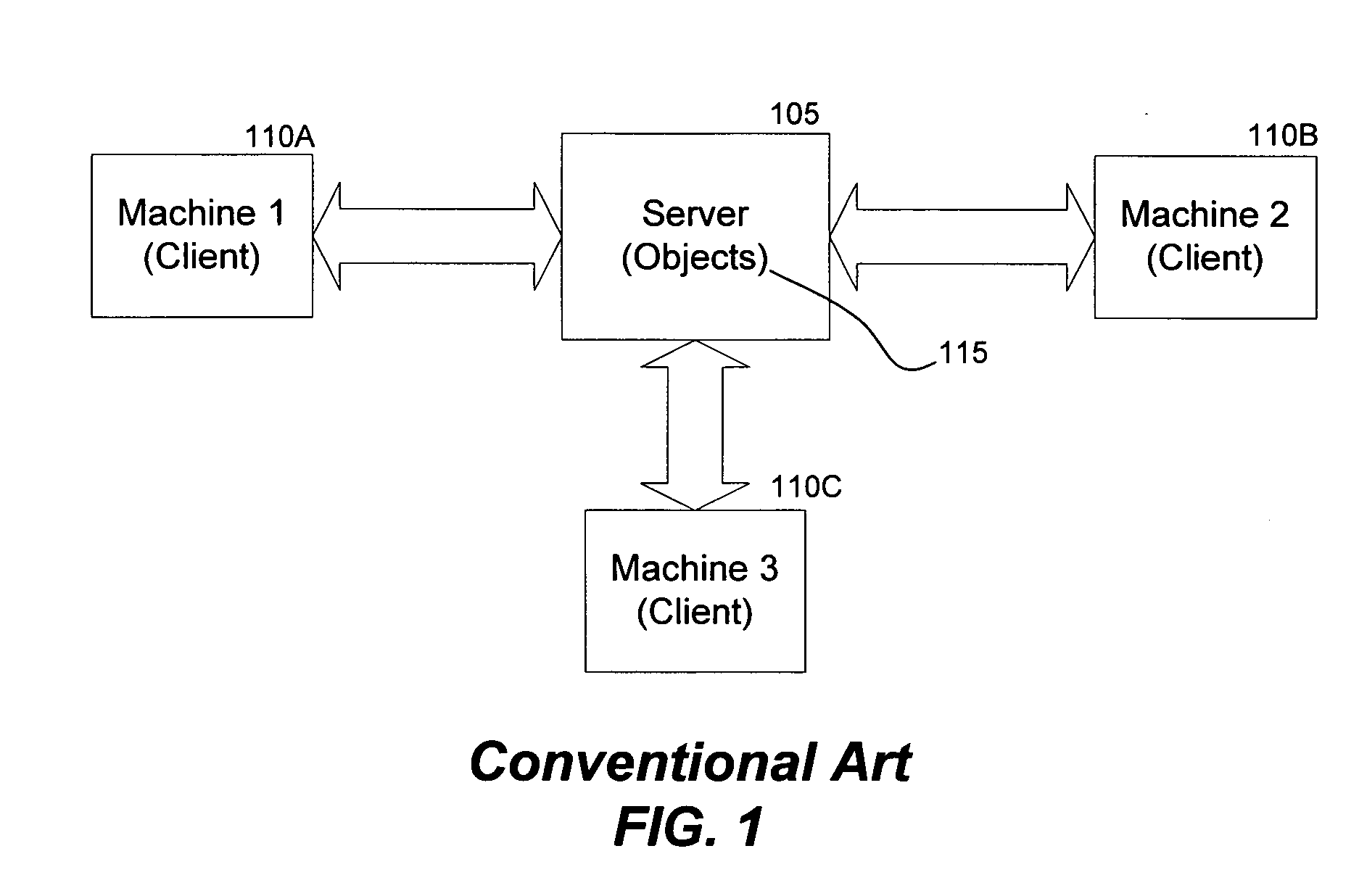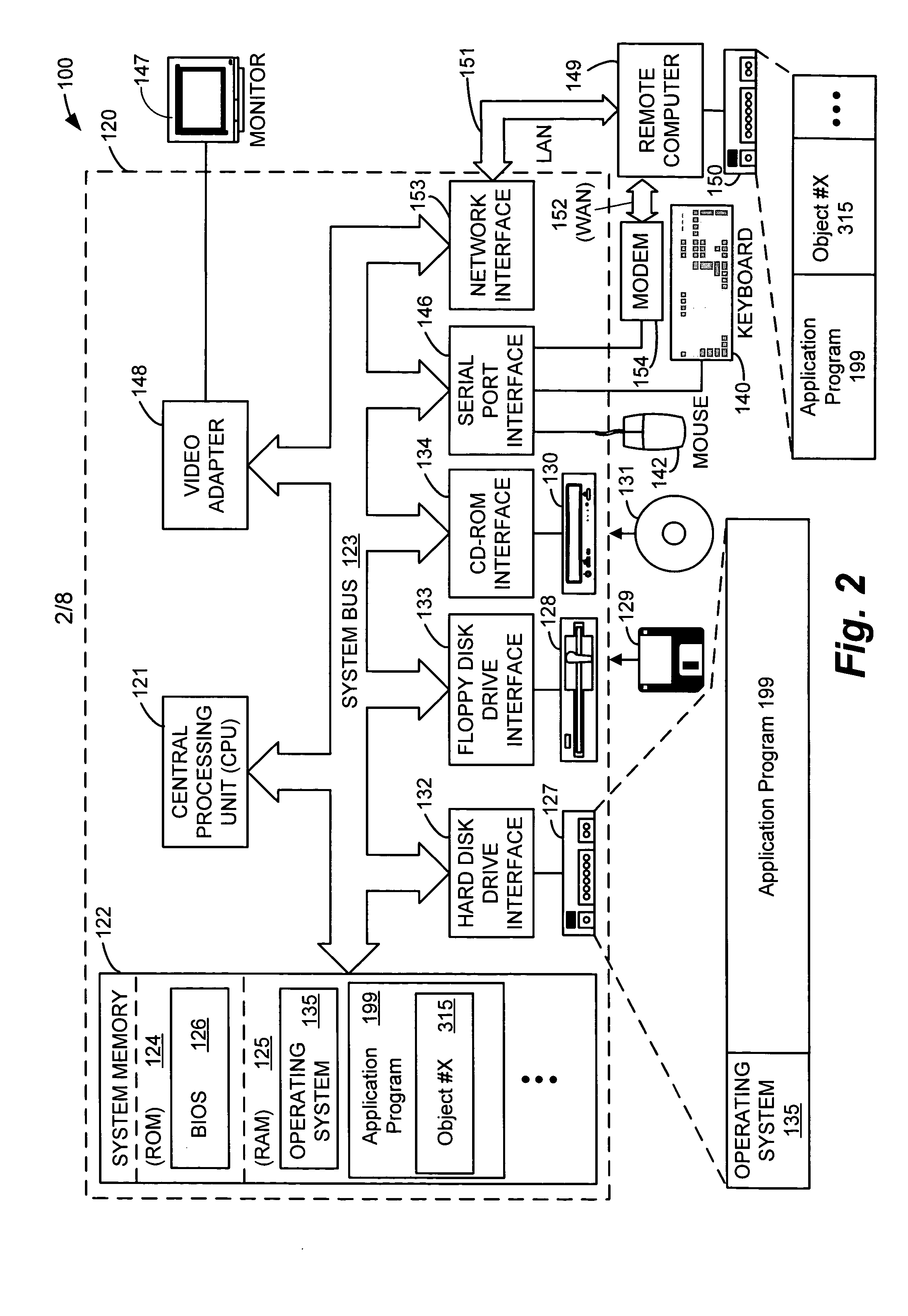System and method for sharing objects between computers over a network
a technology of sharing objects and computers, applied in the direction of program control, program/content distribution protection, instruments, etc., can solve the problems of network-based objects only being shared, latency can be very disruptive to real-time collaboration, and troublesome latency
- Summary
- Abstract
- Description
- Claims
- Application Information
AI Technical Summary
Benefits of technology
Problems solved by technology
Method used
Image
Examples
Embodiment Construction
[0033] The method and system can share objects that may reside on different computers. These objects can be accessed and shared using a computer network such as the Internet. The objects can comprise computer programming objects, that may include but are not limited to, application programming interfaces (APIs), programming object libraries, computer program object definitions, and other like information for computer network based applications. The method and system operates like a peer-to-peer or multipoint computer network instead of a conventional client-server architecture.
[0034] The method and system can work with both peer-to-peer networks and client-server networks without requiring computers in a network to be identified as servers or as non-server (client) type computers. Applications for the method and system can include real time collaboration (RTC) applications that can allow computers connected over a network to communicate and share information in real time and almost...
PUM
 Login to View More
Login to View More Abstract
Description
Claims
Application Information
 Login to View More
Login to View More - R&D
- Intellectual Property
- Life Sciences
- Materials
- Tech Scout
- Unparalleled Data Quality
- Higher Quality Content
- 60% Fewer Hallucinations
Browse by: Latest US Patents, China's latest patents, Technical Efficacy Thesaurus, Application Domain, Technology Topic, Popular Technical Reports.
© 2025 PatSnap. All rights reserved.Legal|Privacy policy|Modern Slavery Act Transparency Statement|Sitemap|About US| Contact US: help@patsnap.com



